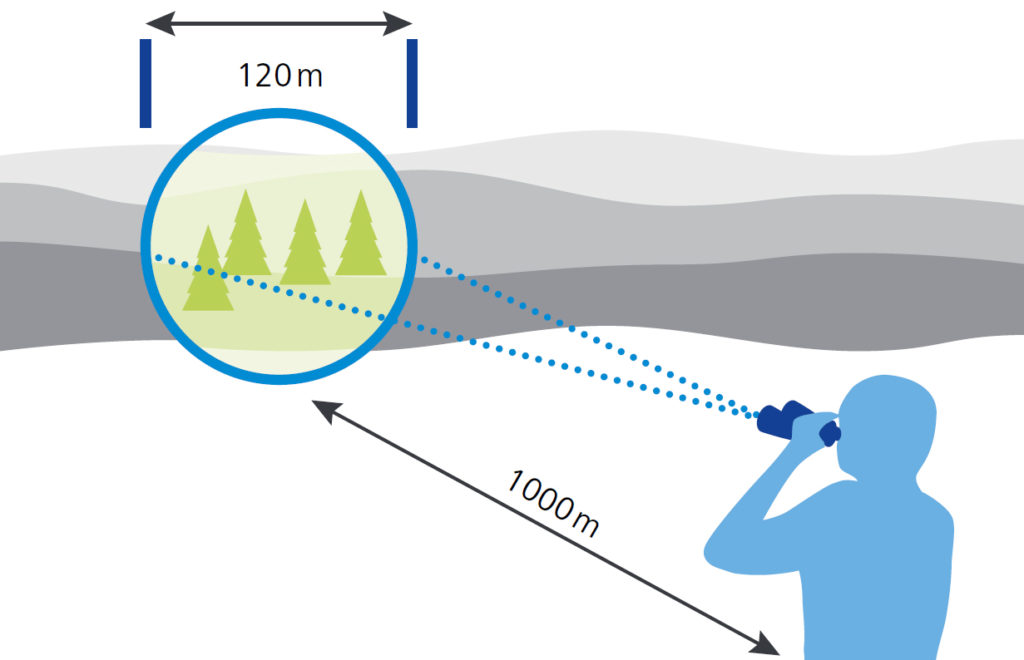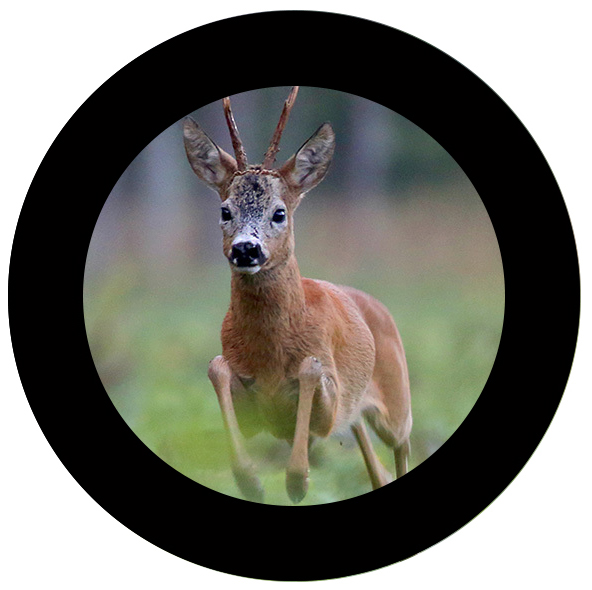How to use it to compare binoculars
The field of view describes the area seen when looking through the optics – without moving them. For example, if you look at the edge of a forest through binoculars at a distance of 1,000 m and see an area covering 120 m, the binoculars have a field of view of 120 m/1,000 m.

through the binoculars.
Field of view and viewing angle
Occasionally, the viewing angle or objective viewing angle is given, e.g. 6°. The field of view and viewing angle can be easily calculated:

The field of view depends on the magnification, i.e. in general lower magnification levels have a larger field of view than higher levels. Therefore, when comparing different binoculars you must compare those with the same magnification only.
Tunnel vision
Very small fields of view give the impression of looking through a tunnel. There is a lot of black on the outside and a small image area in the middle. this undesired effect occurs on simple products and primarily on many zoom binoculars.


Wide angle binoculars and subjective viewing angle
Wide angle binoculars, on the other hand, shine with very large fields of view that offer a wide overview and comfortable observation. The field of view is so large that the image circle in the eyepiece appears at an angle of 60° or higher. This angle at which the image is observed in the eyepiece, is the subjective or eye-side viewing angle. The 60° threshold that determines the predicate “wide-angle” is specified in an ISO standard. Is a field of view, e.g. 120 m at 1,000 m, good or bad for binoculars? The answer depends on the magnification. 10x binoculars with this field of view would be very good (subjective viewing angle approx. 69°), a 7x pair with this field of view would be rather weak (subjective viewing angle of 48° only). The subjective viewing angle shows immediately if the field of view is pleasantly large and comfortable or if a tunnel vision can be expected.
Specification of the field of view
The field of view cannot be calculated from the pure type designation (e.g. 10 x 42) but are specified by the optical design. The size of the prism and the eyepiece in particular determine which image angles can pass through the binoculars. The lens diameter does not affect this it only influences the brightness.
Edge definition
When comparing the edge definition of different binoculars, it is vital to not only use the same types (e.g. 10 x 42) only, but also take the fields of view into consideration. If one pair has a field of view of 120 m and another 100m at 1,000 m only, it is easier for the second to have better edge definition. However, this “benefit” comes with a considerable loss of field of view.
Field of view on riflescopes
Unlike binoculars or spotting scopes, riflescopes generally have a smaller field of view and it is given at 100 m instead of 1,000 m. For safety reasons (recoil), however, a complete view can be obtained from a much larger distance (eye relief).